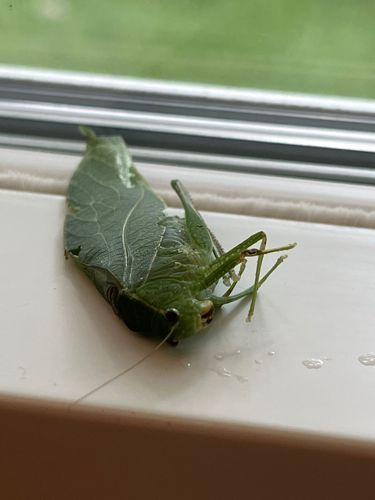Katydid
Scientific Name: Various genera and species within the family Tettigoniidae (e.g., Pterophylla camellifolia for Common True Katydid)
Order & Family: Order: Orthoptera, Family: Tettigoniidae
Size: Typically range from 2 to 10 cm (0.8 to 4 inches) in body length, with some tropical species being larger. The wings can extend beyond the body length.

Natural Habitat
Found in a variety of habitats rich in vegetation, including forests, woodlands, grasslands, gardens, and shrubland. They prefer environments with ample foliage for camouflage and food.
Diet & Feeding
Mainly herbivorous, feeding on plant leaves, flowers, and sometimes seeds and fruits. Some species are omnivorous, supplementing their diet with small insects or insect eggs.
Behavior Patterns
Katydids are primarily nocturnal, using their camouflage during the day to avoid predators. Males produce characteristic songs by rubbing their wings together (stridulation) to attract females. Their long antennae are used for touch and detecting vibrations. If threatened, they may jump or fly away. Nymphs (immature katydids) resemble smaller, wingless versions of the adults.
Risks & Benefits
Generally beneficial or neutral. They can be considered pests in agriculture or gardens if populations are high, as their feeding can damage crops. However, they are also part of the food chain, serving as prey for birds, bats, and other insects. Their presence can indicate a healthy ecosystem.
Identified on: 8/14/2025